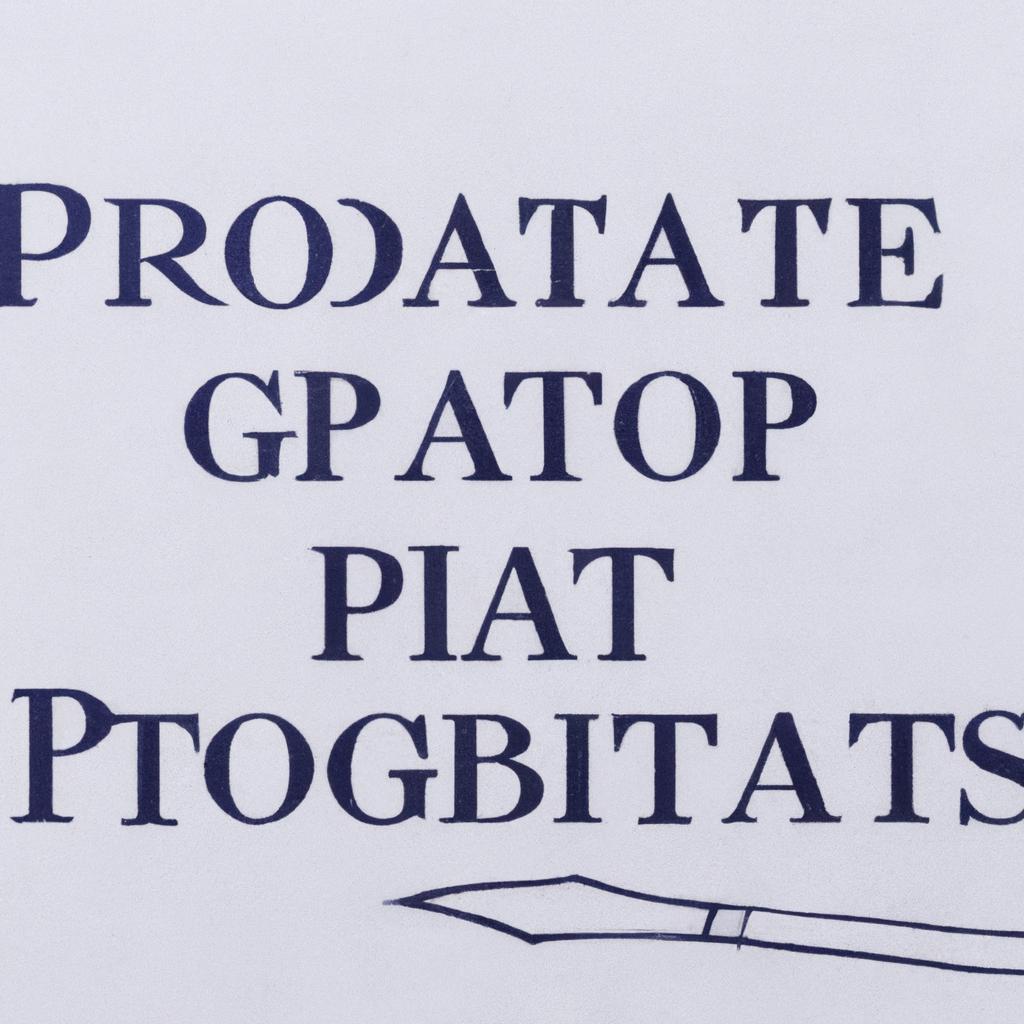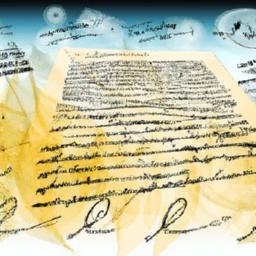Navigating the complexities of the legal world can be daunting, especially when it comes to matters of probate. As seasoned lawyers at Morgan Legal Group, located in the heart of New York City, we are here to guide you through the intricacies of probate documents. Understanding what constitutes a probate document is crucial for ensuring the smooth administration of a deceased individual’s estate. Join us as we delve into the realm of probate and shed light on the significance of these critical legal instruments.
Understanding the Purpose and Scope of Probate Documents
Probate documents are crucial legal papers that play a significant role in the distribution of a deceased individual’s assets and property. These documents are typically filed with the court to ensure that the deceased person’s wishes are carried out according to the law. Probate documents outline the deceased’s last will and testament, list out their assets and liabilities, and determine the rightful heirs and beneficiaries.
The scope of probate documents can vary depending on the complexity of the estate and the individual’s financial situation. Some common types of probate documents include the petition for probate, the death certificate, the inventory of assets, and the final distribution agreement. It is important to consult with an experienced estate planning attorney to ensure that your probate documents are properly drafted and executed to avoid any potential legal issues down the line.

Key Components of a Probate Document and Their Importance
Understanding the key components of a probate document is essential for ensuring a smooth and efficient estate administration process. These documents play a crucial role in determining how a deceased individual’s assets will be distributed, debts will be paid off, and final wishes will be carried out. Without a comprehensive probate document, the probate court may face challenges in accurately executing the deceased’s wishes.
The key components of a probate document include:
- Last Will and Testament
- Letters Testamentary
- Inventory of Assets
- Creditor Claims
- Distribution Plan
| Last Will and Testament | Legal document that outlines the deceased’s final wishes regarding asset distribution. |
| Letters Testamentary | Document issued by the court granting authority to the executor to perform their duties. |

Navigating the Probate Process: Tips for Drafting and Executing Probate Documents
When it comes to navigating the probate process, understanding the significance of probate documents is crucial. These legal papers play a vital role in the distribution of a deceased individual’s assets and property. Probate documents are essentially the paperwork that is required to initiate and complete the probate process. They include a variety of important forms and documents that are necessary for settling the estate of the deceased.
One of the most common probate documents is the Last Will and Testament, which outlines the deceased person’s wishes regarding the distribution of their assets. Other important probate documents include the Petition for Probate, which initiates the probate process, and the Letters Testamentary, which grants the executor the authority to act on behalf of the estate. Understanding how to properly draft and execute these probate documents is essential to ensuring a smooth and efficient probate process.

Avoiding Common Pitfalls in Probate Document Preparation and Execution
Probate documents are legal instruments that play a crucial role in the distribution of a deceased person’s assets and the settling of their estate. These documents include wills, trusts, and power of attorney forms. Proper preparation and execution of probate documents are essential to ensure that the deceased’s wishes are carried out accurately and efficiently.
Common pitfalls in probate document preparation and execution can lead to costly delays, disputes among family members, and even potential legal challenges. It is important to work with a qualified attorney who specializes in probate law to avoid these pitfalls. Some key areas to focus on include:
- Clearly defining beneficiaries and heirs
- Ensuring all documents are properly signed and witnessed
- Updating documents regularly to reflect any changes in circumstances
Q&A
Q: What is a probate document?
A: A probate document is a legal document that is filed with the court after someone has passed away in order to authenticate and distribute their assets according to their will or state laws.
Q: Why are probate documents important?
A: Probate documents are important because they provide a clear and legal process for the distribution of a deceased person’s assets, ensuring that their wishes are carried out and that their estate is settled properly.
Q: What types of documents are considered probate documents?
A: Common types of probate documents include wills, death certificates, petitions for probate, inventories of assets, and court orders approving the distribution of assets.
Q: Who can access probate documents?
A: Probate documents are generally public records, so anyone can access them by visiting the courthouse where the probate proceedings are taking place or by requesting copies from the court clerk.
Q: How long does the probate process typically take?
A: The probate process can vary depending on the complexity of the estate and any disputes that may arise, but it typically takes several months to a few years to complete.
To Conclude
In conclusion, probate documents play a crucial role in the legal process of distributing a deceased person’s assets. From wills to court filings, these documents serve as a roadmap for navigating the complex world of probate law. Understanding what probate documents are and how they work can provide peace of mind and clarity during a difficult time. Whether you are looking to create your own estate plan or are currently involved in the probate process, having a firm grasp on these documents is key to ensuring a smooth transition of assets. By educating yourself and seeking guidance from legal professionals, you can confidently navigate the probate process and honor the wishes of your loved ones.
 Probate is a legal process that takes place after a person passes away, typically involving the distribution of their assets and property according to their will. During this process, various documents are prepared and filed with the court. One such document is known as a probate document.
Probate is a legal process that takes place after a person passes away, typically involving the distribution of their assets and property according to their will. During this process, various documents are prepared and filed with the court. One such document is known as a probate document.
In this article, we will dive into what exactly a probate document is, its purpose, and how it plays a crucial role in the probate process. Additionally, we will explore the different types of probate documents and provide some practical tips for dealing with these documents.
Defining Probate Documents
A probate document is a legal instrument that is used in the administration of a deceased person’s estate. It is typically filed with the court and serves as a written record of the assets, debts, and instructions of the deceased individual.
The purpose of a probate document is to facilitate the distribution of the deceased’s property according to their wishes or state laws. It also serves as a way for creditors to make claims against the estate and for beneficiaries to receive their inheritances.
Types of Probate Documents
There are several different types of probate documents that are commonly used throughout the probate process. These include:
1. Last Will and Testament – This is a legal document created by the deceased that outlines how they want their property and assets to be distributed after their death. It also typically designates an executor or personal representative to handle the administration of the estate.
2. Petition for Probate – This document is filed with the court to initiate the probate process. It includes details about the deceased, such as their name, date of death, and residence. The Petition for Probate is typically accompanied by the deceased’s Last Will and Testament.
3. Letters Testamentary/Letters of Administration – These are letters issued by the court to the executor or personal representative named in the deceased’s will. These letters give the executor the legal authority to act on behalf of the estate and carry out their duties.
4. Inventory and Appraisal – This document is a detailed list of the deceased’s assets and their estimated value. It is used to determine the total value of the estate and is typically prepared by the executor or personal representative with the help of appraisers.
5. Notice to Creditors – This is a public notice that is typically published in a local newspaper, informing creditors of the deceased’s passing and giving them a deadline to make any claims against the estate. This notice helps protect the estate from unknown or undisclosed debts.
6. Final Account and Report – This document is a comprehensive report of all the activities and transactions that occurred during the probate process. It includes details such as the sale of assets, payment of debts and taxes, and the distribution of the estate’s remaining assets to beneficiaries.
Benefits of Probate Documents
Probate documents serve various purposes, and the use of these documents can bring several benefits to the probate process. These include:
1. Legal Protection – Probate documents provide legal protection for the executor and the beneficiaries. They establish a legal framework for the distribution of assets and hold the executor accountable for their actions during the probate process.
2. Clarity – These documents clearly outline the wishes of the deceased and ensure that their property is distributed according to those wishes. This eliminates any confusion or disputes among family members and beneficiaries.
3. Transparency – Probate documents are a matter of public record and can be accessed by anyone. This helps to ensure transparency and accountability during the probate process.
Tips for Dealing with Probate Documents
Dealing with probate documents can be a daunting and overwhelming task, especially during a time of grief. Here are some practical tips to help make the process more manageable:
1. Consult with an Attorney – Probate is a complex legal process, and it’s essential to consult with a qualified attorney before attempting to navigate it on your own. An attorney can help you understand the necessary documents, legal requirements, and deadlines.
2. Organize and Keep Records – Keeping accurate records of all probate documents is crucial. Make sure all documents are filed and organized in a safe place for easy retrieval.
3. Communicate with Beneficiaries – As the executor, it is your responsibility to keep all beneficiaries informed about the probate process. Regular communication can help prevent any confusion or misunderstandings.
In Conclusion
In summary, probate documents are an essential component of the probate process. They serve to protect the deceased’s wishes, provide clarity and transparency, and facilitate the distribution of assets and debts. It’s crucial to understand the different types of probate documents and seek legal guidance to ensure a smooth probate process. By following the tips mentioned above, you can navigate the probate process efficiently and honor the wishes of your loved one.


